This is the final installment of the International Suzuka 1000km Hall of Fame, our look back at the champions of the Suzuka 1000km on the eve of its final running on August 27.
The GT500 class has been the premier category at the Suzuka 1000km ever since 1999, and Japan’s great race has been part of the Super GT championship for over a decade. Our final look focuses on the champions of this GT500 era.
Non-Championship Era II: 1999-2005
After the 1998 season, the FIA GT Championship cut loose the Suzuka 1000km in favour of shorter races and GT2 vehicles. For 1999, the 1000km was repurposed as a non-championship event, open to the best teams from the All-Japan GT Championship (JGTC), and the Super Taikyu Endurance Series, as well as a select few international wildcards.
Honda had owned Suzuka Circuit ever since it was built, but their cars were never able to capture victory at this event, until 1999 – when the Castrol Mugen NSX of Ryo Michigami, Osamu Nakako, and Katsutomo Kaneishi finally took Honda’s first Suzuka 1000km crown. The Mugen x Dome Project, later to become Honda Dome Racing Team, ended up winning four of the first six runnings of this event in the era when GT500 was the premier category.
1999 also saw Kunimitsu Takahashi’s farewell to the 1000km, at the end of a 42-year career as an active racer. But also in this era, we saw the emergence of the new generation of Super GT stars: Michigami, Juichi Wakisaka, Yuji Tachikawa, and Daisuke Ito all won this race on multiple occasions, starting in this non-championship era.
2001 saw the first Toyota victory for a decade, this time with the GT500 Supra. 2002 also saw a Toyota victory, and something of an upset at that – as Team Goh’s Audi R8 came to the 1000km as a wildcard intent on pulverizing the field. Instead, it broke down one-third of the way in, giving Toyota Team Le Mans the victory.
2005 might have been the most dramatic race of the non-championship era by far. Michigami, the lead driver of the Takata Dome NSX, was poised to tie Kunimitsu’s record of four Suzuka 1000km victories in the closing laps of the race. But with just three laps to go, co-driver Takashi Kogure was forced to pit with a strange vibration, giving the victory to Toyota Team SARD by just ten seconds at the end.
While Honda and Toyota traded victories, Nissan were almost entirely a non-factor in the GT500 category in this non-championship era. And as the All-Japan GT Championship rebranded into Super GT from 2005, they took the opportunity to incorporate the race into the championship calendar starting in 2006 – guaranteeing that every team in GT500 would be able to contest the biggest national endurance race on the calendar.

1999: #16 Castrol Mugen Honda NSX – Ryo Michigami, Osamu Nakako, & Katsutomo Kaneishi

2000: #18 Takata Dome Honda NSX – Juichi Wakisaka, Katsutomo Kaneishi, & Daisuke Ito
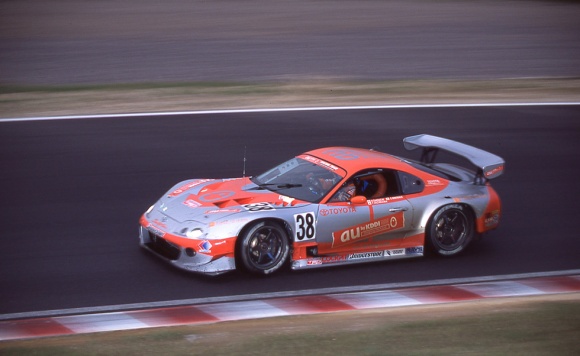
2001: #38 au Cerumo Toyota Supra – Yuji Tachikawa, Hironori Takeuchi, & Shigekazu Wakisaka

2002: #6 Esso Ultraflo Toyota Supra – Juichi Wakisaka, Akira Iida, & Shigekazu Wakisaka

2003: #18 Takata Regain Dome Honda NSX – Ryo Michigami & Sébastien Philippe

2004 – #18 Takata Dome Honda NSX – Ryo Michigami, Sébastien Philippe, & Daisuke Ito
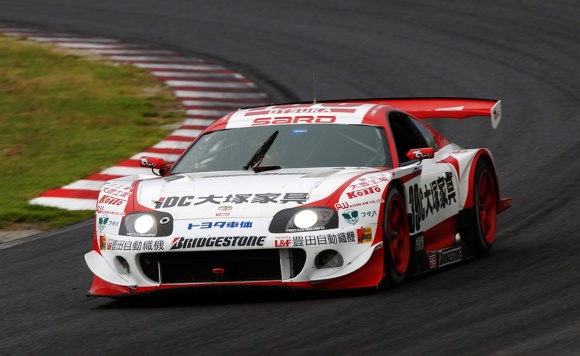
2005: #39 iDC SARD Toyota Supra – André Couto, Ronnie Quintarelli, & Hayanari Shimoda*
Super GT Era: 2006-2017
At the 35th running of the Suzuka 1000km, the race returned as a full-time fixture of the top level of Japanese sports car racing for the first time since the end of the JSPC era in 1991. All the manufacturers, all the teams, and all the drivers from GT500 would take part. It was now the centerpiece event of the championship, much like the 24 Hours of Le Mans is to the WEC, the Bathurst 1000 is to Australian Supercars, or the Indianapolis 500 is to American open wheel racing.
Nissan, who missed most of the last non-championship era, made up for lost time by winning two of the first three runnings in the Super GT era via Calsonic Team Impul, with the most famous livery in the series. 2006 saw a great duality for Nissan: The emotional high of Kazuki Hoshino winning for his father’s team, the devastating low of the #23 NISMO team’s bizarre disqualification and the worst year of Yuji Ide’s professional career.
2007 almost saw Autobacs Racing Team Aguri overcome a massive success ballast handicap to win, only for André Lotterer in the TOM’s Lexus SC430 to take the win via a brilliant strategic call to undercut the ARTA NSX, take on wet tyres, and drive on as the visibility diminished and the rains hardened. It was also the first win for Toyota’s Lexus badge, continuing the success of the company as a whole at Suzuka.
Lotterer, Benoît Tréluyer, Loïc Duval, and Oliver Jarvis were all part of a generation of Suzuka 1000km winners who would eventually contribute to the success of Audi Sport Team Joest over the final six years of their Le Mans dynasty. In 2008, Sébastien Philippe became the first gaijin to win three Suzuka 1000kms in his career, joining Tsugio Matsuda in the Calsonic Impul GT-R, to give the GT-R badge its first-ever win at the event.
However, the race would face a rocky future over the next three years due to circumstances outside of motorsport. The residual effects of the Lehman Shock of 2009 shortened the Suzuka 1000km to a 700km endurance race for the next two years. The Great Tohoku Earthquake and Tsunami of 2011 shortened it again, this time to 500 kilometers. The race still carried its former prestige, however, and was by no means short of drama.
That 2009 race gave us an upset when GT500 upstarts Hiroaki Ishiura and Kazuya Oshima won from pole for relative dark horses Lexus Team Kraft. In 2010, it was ARTA’s turn to finally win the race. Takashi Kobayashi, a rookie third driver, stunned everyone by taking pole position – even more stunning, he sat the entire 700km race on the sidelines as Ralph Firman and Yuji Ide drove to the victory on the 20th anniversary of team founder Aguri Suzuki’s F1 Japanese Grand Prix podium at the same venue.
After three years of hardship, the Suzuka 1000km was finally restored to its original distance in 2012. That year, the S Road MOLA GT-R of Masataka Yanagida & Ronnie Quintarelli won the 1000km, to spark an incredible run to the championship that season – they’re the only team in this era to win both the Suzuka 1000km, and the GT500 Championships, in the same year.
Honda captured their seventh victory in 2013, as Naoki Yamamoto and Frédéric Makowiecki became first-time winners at the biggest race of the season. Honda and Nissan have remained level at seven victories ever since, as Lexus have won the last three years in succession.
Over those three years, Toyota Motor Corporation finally usurped Porsche as the winningest manufacturer in the history of the Suzuka 1000km, having now won thirteen times between the Toyota and Lexus badges. James Rossiter won it in back-to-back years for Lexus Team TOM’s, first with Kazuki Nakajima in 2014, then in 2015 with Daisuke Ito, the latest three-time winner of the event.
And finally, just last year, Lexus Team ZENT Cerumo took the honours in a contentious 2016 event, with Yuji Tachikawa and Hiroaki Ishiura winning their second 1000kms for their careers.
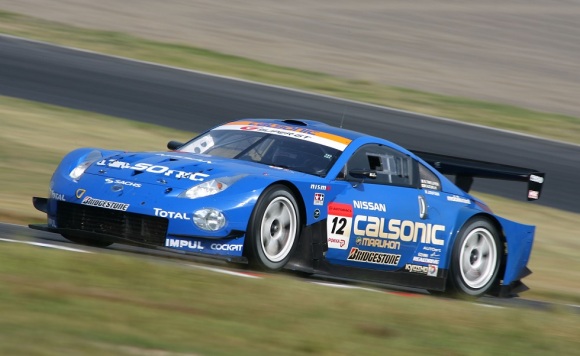
2006: #12 Calsonic Impul Nissan Z – Benoît Tréluyer, Kazuki Hoshino, & Jérémie Dufour

2007: #1 Houzan TOM’s Lexus SC430 – Juichi Wakisaka, André Lotterer, & Oliver Jarvis*

2008: #12 Calsonic Impul Nissan GT-R – Tsugio Matsuda & Sébastien Philippe
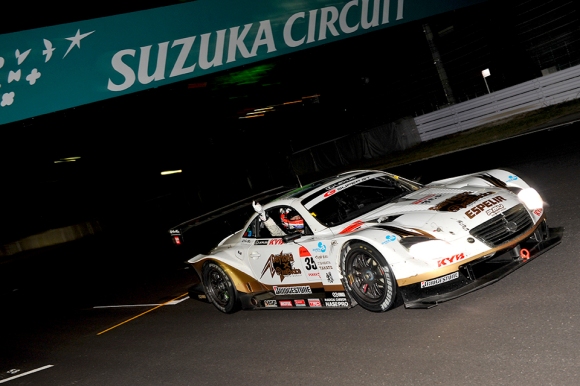
2009: #35 Kraft Lexus SC430 – Hiroaki Ishiura & Kazuya Oshima
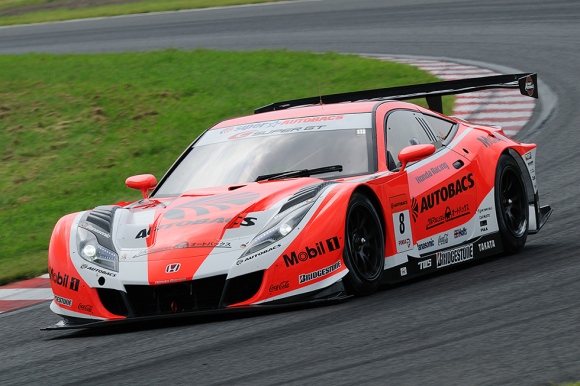
2010: #8 ARTA Honda HSV-010 – Ralph Firman, Yuji Ide, & Takashi Kobayashi*
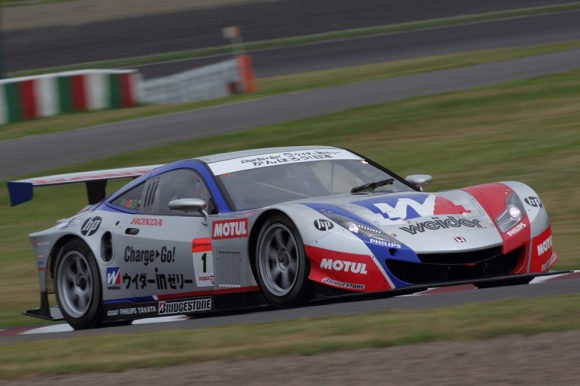
2011: #1 Weider Honda HSV-010 – Takashi Kogure & Loïc Duval
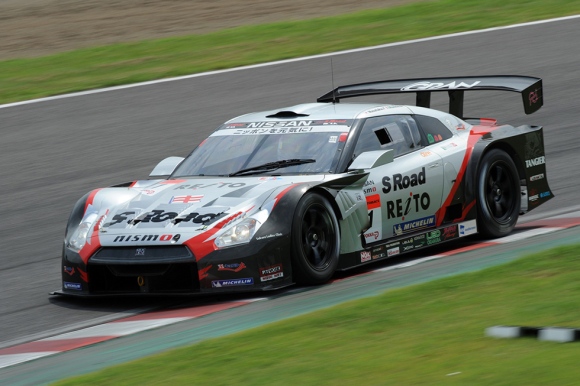
2012: #1 S Road Nissan GT-R – Masataka Yanagida & Ronnie Quintarelli
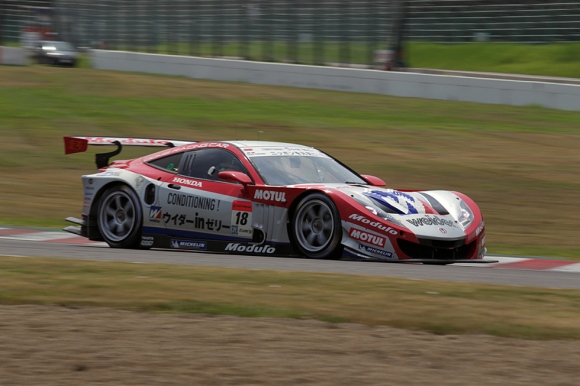
2013: #18 Weider Honda HSV-010 – Naoki Yamamoto & Frédéric Makowiecki

2014: #36 Petronas TOM’s Lexus RC F – Kazuki Nakajima & James Rossiter
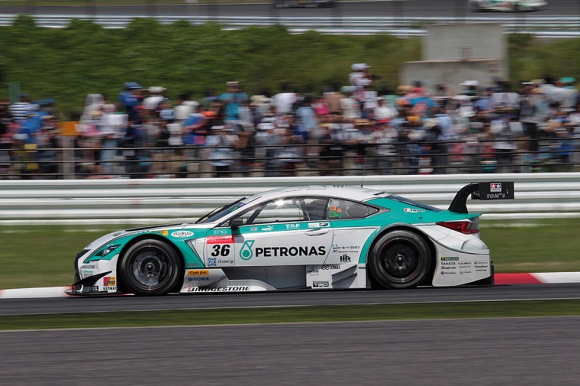
2015: #36 Petronas TOM’s Lexus RC F – Daisuke Ito & James Rossiter
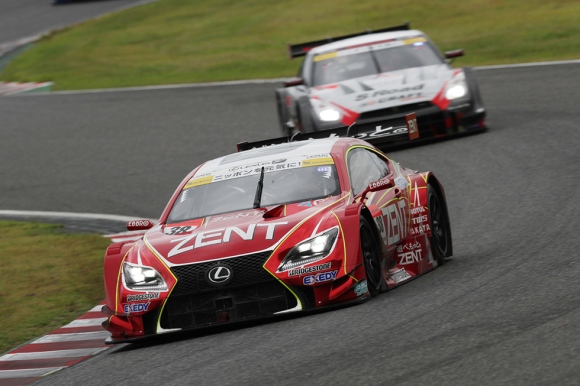
2016: #38 ZENT Cerumo Lexus RC F – Yuji Tachikawa & Hiroaki Ishiura
Winning Manufacturers
Toyota – 13 (1966, 1968, 1972, 1987, 1991, 2001, 2002, 2005, 2007, 2009, 2014, 2015, 2016)
Porsche – 11 (1967, 1969, 1971, 1981, 1983, 1984, 1985, 1986, 1988, 1989, 1994)
Honda – 7 (1999, 2000, 2003, 2004, 2010, 2011, 2013)
Nissan – 7 (1970, 1973, 1990, 1993, 2006, 2008, 2012)
McLaren – 2 (1995, 1996)
Mercedes-Benz – 2 (1997, 1998)
BMW – 1 (1982)
March Engineering – 1 (1980)
Peugeot – 1 (1992)
Winning Cars
Honda NSX-GT – 4 (1999, 2000, 2003, 2004)
Honda HSV-010 – 3 (2010, 2011, 2013)
Lexus RC F GT500 – 3 (2014, 2015, 2016)
Porsche 956 – 3 (1983, 1984, 1986)
Porsche 962C – 3 (1985, 1988, 1989)
Toyota Supra GT500 – 3 (2001, 2002, 2005)
Lexus SC430 GT500 – 2 (2007, 2009)
McLaren F1 GTR – 2 (1995, 1996)
Mercedes-Benz CLK-GTR – 2 (1997, 1998)
Nissan GT-R GT500 – 2 (2008, 2012)
Nissan Fairlady 240Z – 2 (1970, 1973)
Porsche Carrera 6 – 2 (1967, 1969)
BMW M1 – 1 (1982)
March Engineering 75S – 1 (1980)
Nissan R90CP – 1 (1990)
Nissan R92CP – 1 (1993)
Peugeot 905 T16 Evo – 1 (1992)
Porsche Carrera 10 – 1 (1971)
Porsche 935 K3 – 1 (1981)
Toyota 2000GT – 1 (1966)
Toyota 7 – 1 (1968)
Toyota 87C-V – 1 (1987)
Toyota 91C-V – 1 (1991)
Toyota Celica 1600GT-R – 1 (1972)
Winning Teams (since 1980)
Dome Racing Team – 6 (1999, 2000, 2003, 2004, 2011, 2013)
Nova Engineering – 5 (1984, 1985, 1986, 1988, 1989)
Toyota/Lexus Team TOM’s – 4 (1987, 2007, 2014, 2015)
AMG-Mercedes – 2 (1997, 1998)
FromA Racing – 2 (1986, 1988)
GTC Racing Team – 2 (1995, 1996)
NISMO – 2 (1990, 1993)
Team Impul – 2 (2006, 2008)
Toyota/Lexus Team Cerumo – 2 (2001, 2016)
Toyota/Lexus Team LeMans – 2 (1993, 2002)
Toyota/Lexus Team SARD – 2 (1991, 2005)
Auto Beaurex Motor Sports – 1 (1982)
Autobacs Racing Team Aguri – 1 (2010)
Kremer Racing – 1 (1981)
Larbre Compétition – 1 (1994)
MOLA International – 1 (2012)
Peugeot Talbot Sport – 1 (1992)
Team Mugen – 1 (1999)
Toyota/Lexus Team Kraft – 1 (2009)
Red Carpet Racing Team – 1 (1980)
Winning Drivers (multiple winners only)
Kunimitsu Takahashi – 4 (1973, 1984, 1985, 1999)
Daisuke Ito – 3 (2000, 2004, 2015)
Ryo Michigami – 3 (1999, 2003, 2004)
Naoki Nagasaka – 3 (1980, 1982, 1991)
Sébastien Philippe – 3 (2003, 2004, 2008)
Juichi Wakisaka – 3 (2000, 2002, 2007)
Ray Bellm – 2 (1995, 1996)
Stanley Dickens – 2 (1988, 1989)
Sachio Fukuzawa – 2 (1966, 1968)
Hiroshi Fushida – 2 (1968, 1971)
Katsutomo Kaneishi – 2 (1999, 2000)
Geoff Lees – 2 (1984, 1987)
Hiroaki Ishiura – 2 (2009, 2016)
Hideki Okada – 2 (1986, 1988)
Ronnie Quintarelli – 2 (2005, 2012)
James Rossiter – 2 (2014, 2015)
Toshio Suzuki – 2 (1990, 1993)
Yuji Tachikawa – 2 (2001, 2016)
Kenji Takahashi – 2 (1984, 1985)
Tomohiko Tsutsumi – 2 (1966, 1969)
Shigekazu Wakisaka – 2 (2001, 2002)
Bob Wollek – 2 (1981, 1984)
Jiro Yoneyama – 2 (1969, 1986)
Winning Tyres
Bridgestone – 23 (1987, 1988, 1990, 1991, 1993, 1997, 1998, 1999, 2000, 2001, 2002, 2003, 2004, 2005, 2006, 2007, 2008, 2009, 2010, 2011, 2014, 2015, 2016)
Dunlop – 13 (1966, 1967, 1968, 1969, 1970, 1971, 1972, 1973, 1980, 1981, 1982, 1983, 1986)
Michelin – 6 (1992, 1994, 1995, 1996, 2012, 2013)
Yokohama – 3 (1984, 1985, 1989)
Epilogue
You are here, on the eve of the final running of this great race as we know it today. Next year, there will be a longer event, a different premier category of vehicles, and a new cast of teams and drivers.
There are still two more champions of the Suzuka 1000km to be crowned. Who will win the final Suzuka 1000km on August 27?
Photos © Suzuka Circuit, Nissan, Toyota
